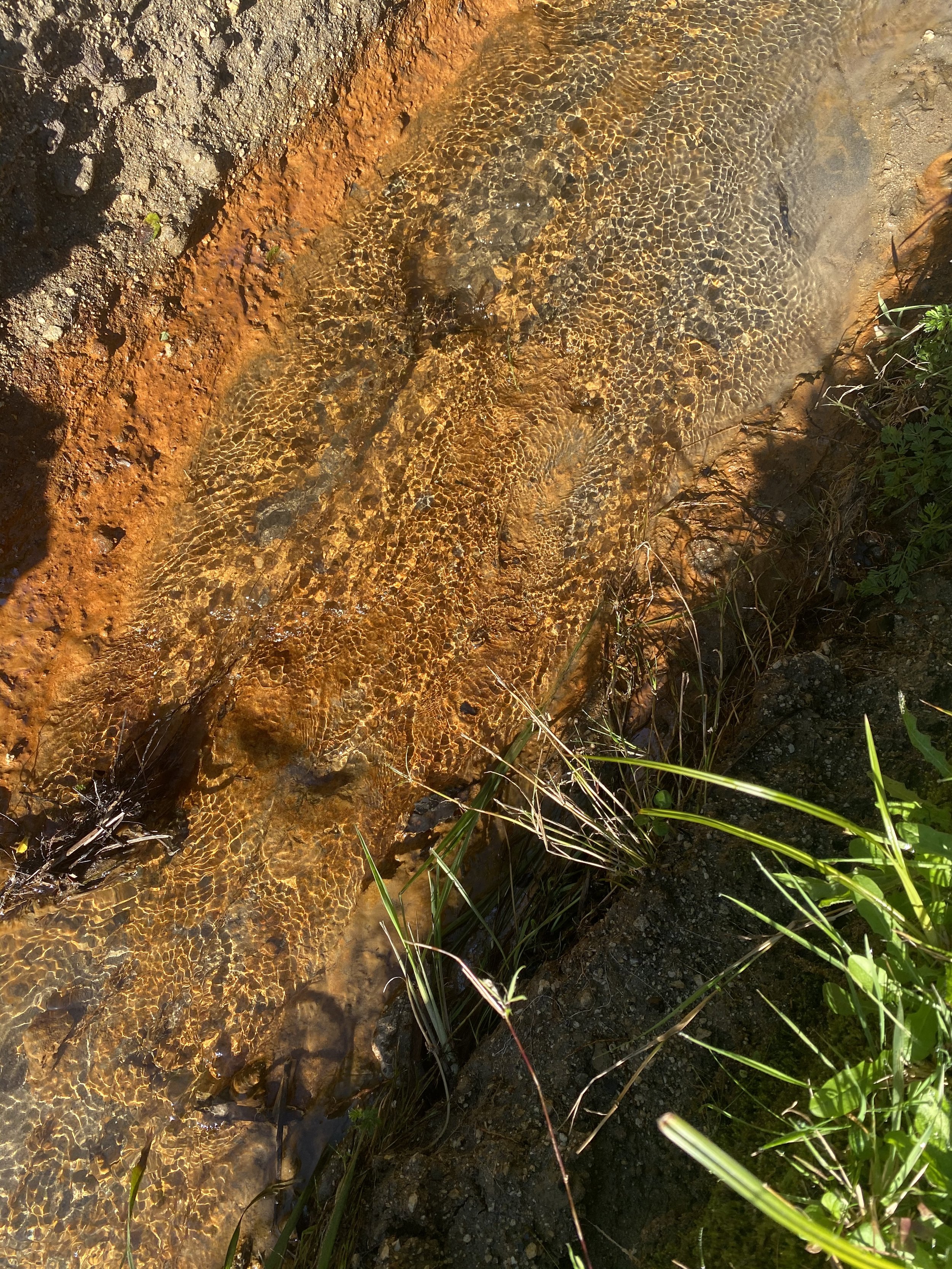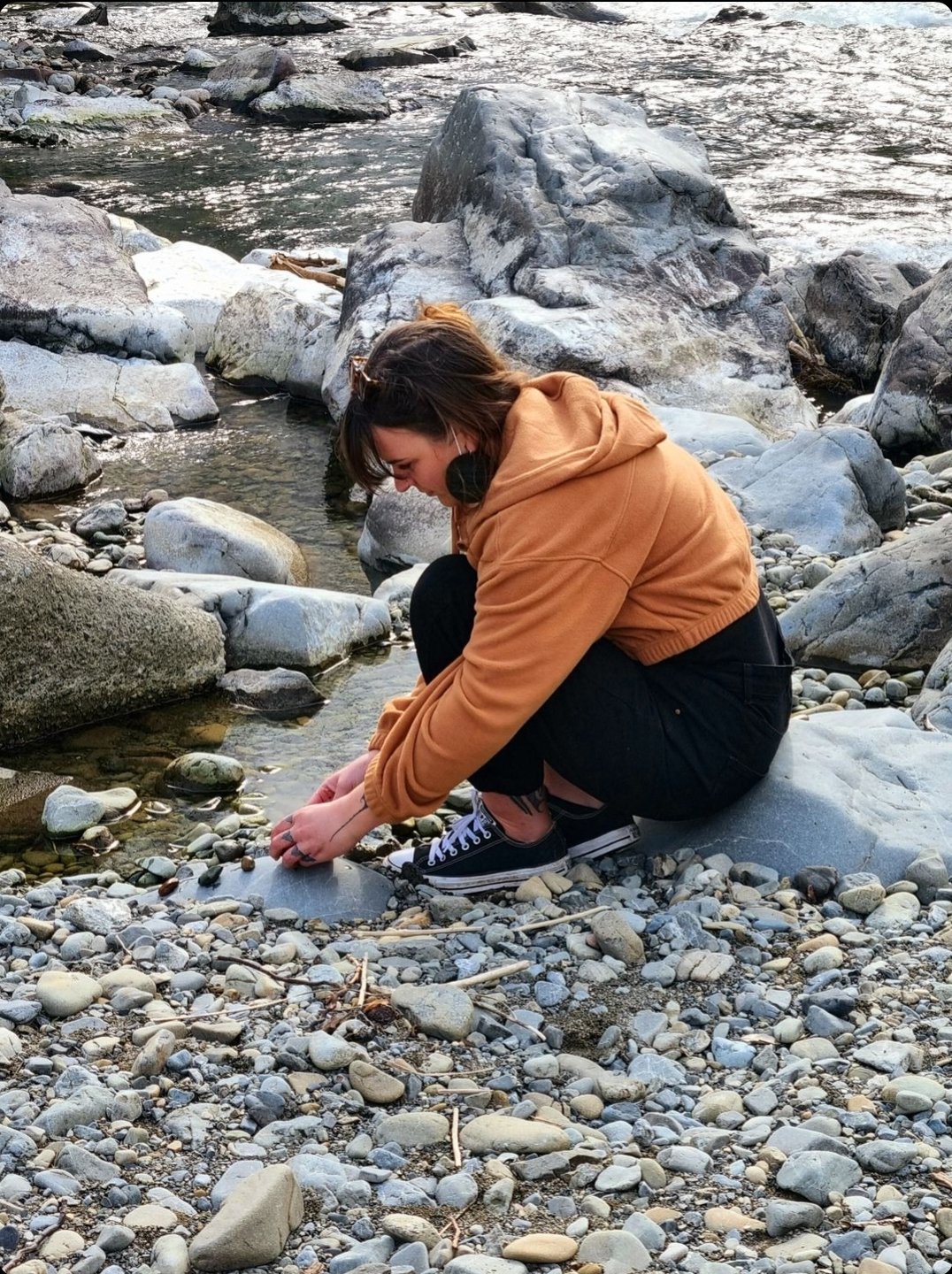
Gathering Earth Pigments
An introductory guide for tangata Māori
Nā Sian Montgomery Neutze, November 2021
Sian Montgomery-Neutze gathering earth pigments (2021)
As gathering and preparing earth pigments for use in mahi toi and other cultural practices is gradually being re-normalised amongst our people, more and more Māori are starting to reach out about how to gather and use these pigments safely and respectfully. I’ll start by saying, by no means do I consider myself an “expert” and every iwi/rohe will have or develop their own set of tikanga around this mahi. I therefore encourage those of you that are interested in researching and using earth pigments to start by seeking out your iwi/rohe specific knowledge and tikanga (wherever possible) and continue building on that body of knowledge through your own practice. As these practices are re-normalised, it’s important that we familiarise ourselves with the tikanga of our tīpuna, and also look at ways to develop new tikanga around this mahi where traditional knowledge or practices may have been lost over time.
It's really encouraging to see more and more Māori wanting to engage in this mahi, it is a taonga tuku iho left for us by our atua and tīpuna. It's an immediate way to connect with the whenua that surrounds us that doesn't require a huge amount of experience or a Master’s Degree to make a start. It's something kids of all ages can actively engage in as well and encourages us all to look a little closer at our environments.
General tikanga around gathering
I treat the process how I would any other cultural practice. In terms of gathering earth pigments, I primarily look within my own rohe. I don’t scratch around in areas that I'm not familiar with or don't whakapapa to and only gather from other rohe if I'm with someone who is from there that has sound knowledge of the area. Each rohe has its own unique whenua and colours that are suitable for different purposes, and you may find yourself wanting to access these at some point. The safest way to do this it to connect with other practitioners/artists/tangata whenua from around the motu. Sharing resources is a tikanga that our tīpuna followed, and making these connections and trading/gathering together makes using these pigments so much more meaningful.
When gathering/trading in earth pigments, I try to find out as much as possible about the whakapapa of each, including where they come from and their proper names and properties, this is one way to learn about and connect with the unique language and mātauranga of earth pigments, and further enriches our practice and our collective bodies of knowledge. When gathering, I don't go out at night or when conditions aren’t safe or suitable (for obvious reasons) and will always leave if something doesn't feel right. I always treat the areas I'm in with respect/caution, ie. don't uproot/trample plants or move anything that's part of a wider ecosystem if it's going to disrupt it, and only ever take what I can carry safely. As a general practice, I make a habit of reaching out to others I know who work with natural pigments and share as much or as often I can. While of course some resources/mātauranga is iwi specific or not meant to be shared with the wider public, it is important that we do continue to share what resources, knowledge and tikanga we can with other Māori, in safe ways, so as to continue to grow our collective understanding of these practices and keep them alive for generations to come. These are all simple tikanga that are commonplace in Te Ao Māori, and are an easy place to start for anyone wanting to explore this mahi.
Some dos and don’ts
Below is a very brief summary of some of the guidelines outlined above
Gathering dos
• Start with your own rohe if possible
• Make connections with other artists/practitioners/tangata whenua and share with others if/when you can
• Find out as much as you can about the pigments you’re gathering/using
• Use appropriate tikanga such as karakia where possible
• Be mindful of what information you share publicly (ie. Be respectful of the mātauranga shared with you
Gathering don’ts
• Gather from others’ rohe without appropriate permission/guidance
• Gather in dangerous/unsuitable conditions
• Cause harm to the surrounding environment
• Take more material than you need
Summary
Working with earth pigments is one way to actively engage and connect with our kōrero and tikanga tuku iho, our tīpuna Māori and our whenua, and deepens our knowledge of the environment on a both a physical and spiritual level. The above are simply starter tips for Māori wanting to explore this mahi, the expectation is always that we will continue to build on these or develop our own tikanga according to our iwi specific knowledge and resources, so as to continue to enrich our collective bodies of knowledge for generations to come.

